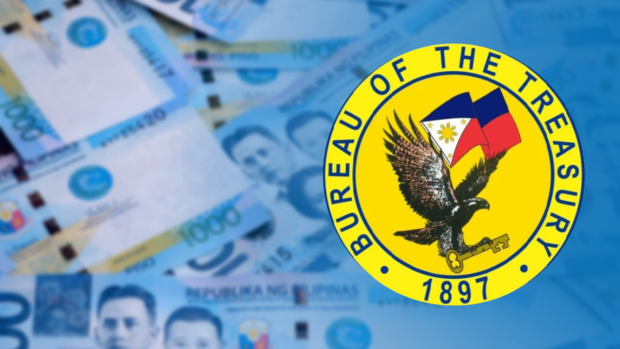
MANILA -The Philippine national government’s debt stock hit another record high of P14.15 trillion at the end of June, after it borrowed another P51.3 billion.
The minimal increase of 0.4 percent from the previous month was mainly due to new domestic borrowings exceeding payments made in June, according to the Bureau of the Treasury (BTr).
Of the total outstanding obligations, 31 percent or P4.45 trillion is owed to foreign lenders while 69 percent or P9.7 trillion was borrowed from domestic lenders.
Peso appreciation
Foreign borrowings decreased by 1.4 percent or P63 billion as gains from the appreciation of the Philippine peso against other currencies more than offset the inflow of fresh debt.
The peso ended June at 55.20 against the US dollar, gaining 95 centavos from 56.15:$1 at the end of May.
Domestic borrowings increased by 1.2 percent or P114.3 billion as the government issued more bonds than it redeemed.
Michael Ricafort, chief economist at the Rizal Commercial Banking Corp., said the latest net borrowings of the national government may reflect the need to finance the still relatively wider budget deficits in recent months.
Ricafort added that the June readout may also be due to higher interest rates that added to the government’s debt servicing costs.
In July, Finance Secretary Benjamin Diokno said that despite the continuing rise of the national government’s debt stock, the Marcos administration is gunning for an “A”-level invest-grade rating from at least one of the three major global credit rating agencies before the end of its term in June 2028.
Visiting missions
Diokno said that the Marcos economic team has engaged visiting missions from Fitch Ratings and Moody’s Investor Service and has met with representatives of S&P Global Ratings during one of their recent sorties in Washington DC.
He said the top three credit watchdogs—all based in New York City—“are bullish” about the Philippines. “They have no fear about us not meeting our borrowing obligations.”
The finance chief noted that Fitch Ratings even upgraded last May its outlook on the Philippines’ “BBB” rating—bottom notch of investment-grade ratings—to “stable” from “negative.” INQ